Why is New York City called the Big Apple?
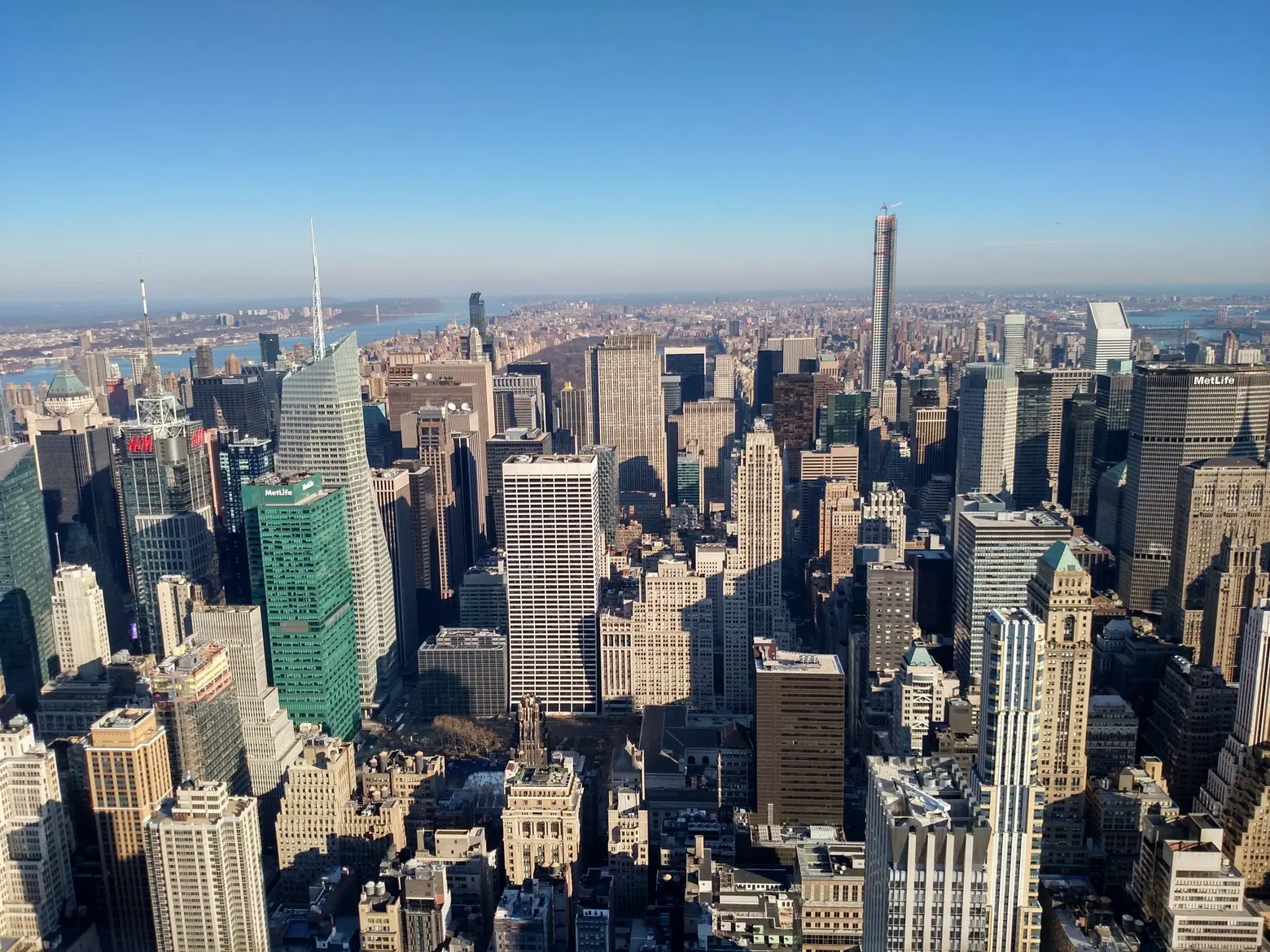
Photo via Public Domain Pictures
Most of the nicknames ascribed to New York make literal sense: Gotham; Empire City; the City That Never Sleeps; the City So Nice They Named It Twice. However, the context behind the “Big Apple” nickname isn’t as obvious. To help us understand the moniker, the New York Public Library detailed a history of the name, taking us through a tour of what “big apple” has meant throughout centuries.
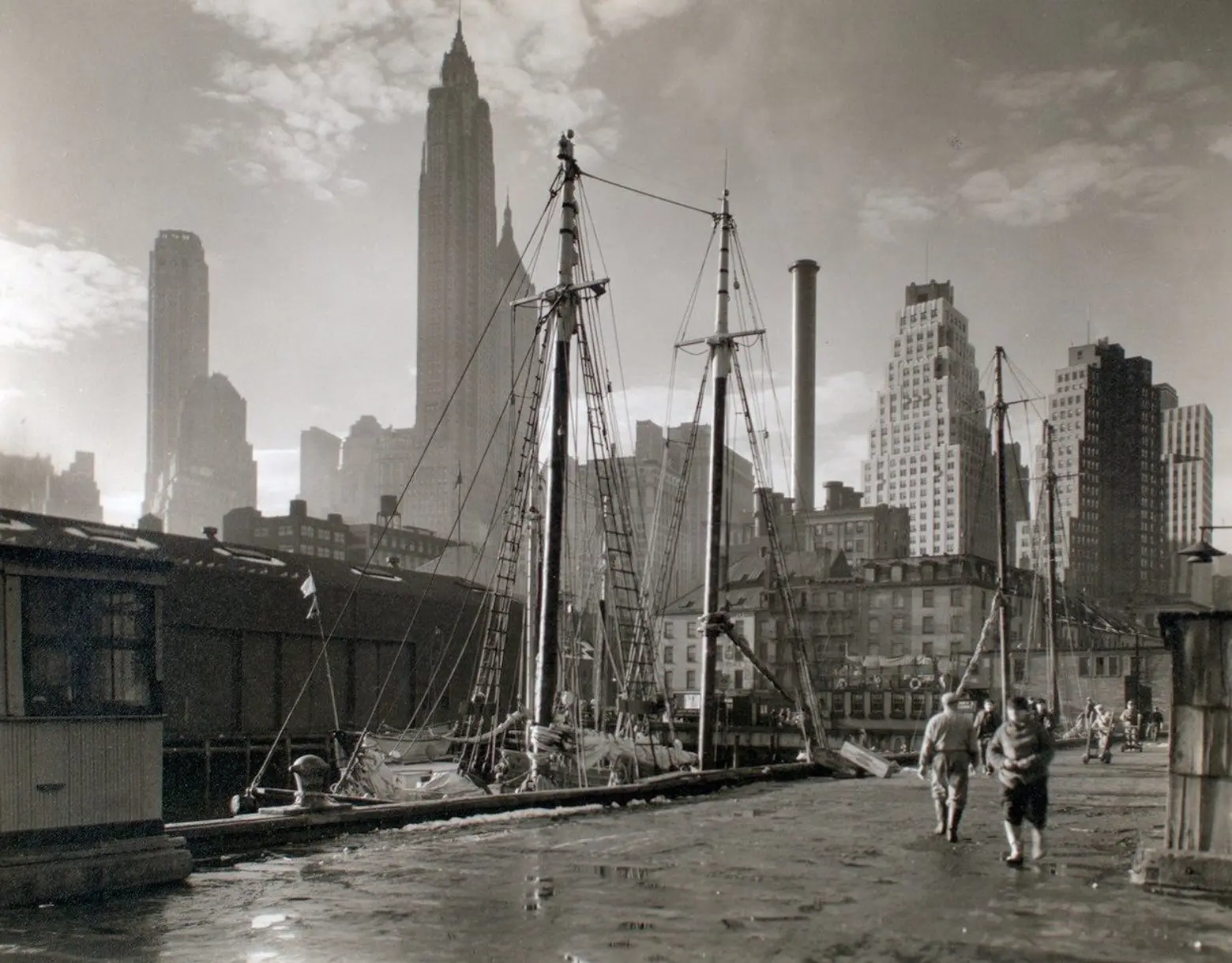
View of Manhattan from Fulton Street circa 1935, courtesy of NYPL
In the 19th century, “big apple” meant an object of desire and ambition. According to the Oxford English Dictionary, the phrase to “bet a big apple” was to “state with supreme assurance” and to be “absolutely confident of.” An 1891 Boston Daily Globe advertisement read: “We will wager a big red apple that the prices attached to our thousand one styles are as low or lower than the same quality of goods that can be bought elsewhere.”
Barry Popik, co-author of a revised edition (2011) of Gerald Leonard Cohen’s “Origin of New York City’s Nickname ‘The Big Apple’” confirms that apple stories and metaphors have been around for a long time. “In the 19th century, there was a craze for growing the biggest fruits and vegetables,” Popik tells 6sqft. “Various apple-growing regions were called a ‘Land of the Big (Red) Apple.’ The ‘big apple’ meant something very desirable [and] the term ‘bet/wage a big apple’ became popular. People noticed that big apples were ‘top of the barrel’.” He adds, “Vaudeville created the terms ‘big time’ (New York City) and ‘small time’ (everywhere else). Expressions involving ‘big’ and ‘apple’ were popular in the early 1900s.”
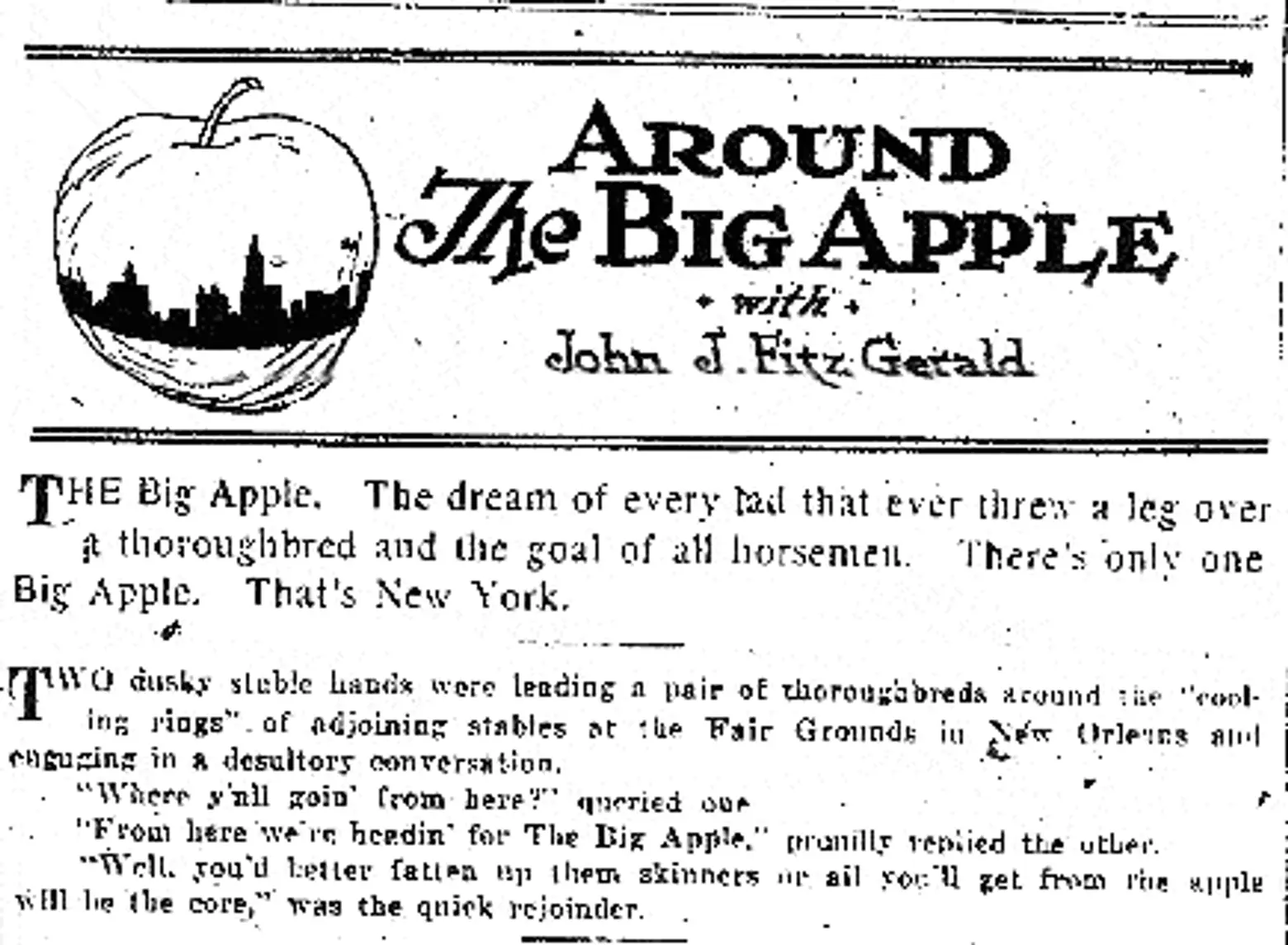 The piece reads:“The Big Apple, the dream of every lad that ever threw a leg over a thoroughbred and the goal of all horsemen. There’s only one Big Apple. That’s New York. Two dusky stable hands were leading a pair of thoroughbreds around the ‘cooling rings’ of adjoining stables at the Fair Grounds in New Orleans and engaging in desultory conversation. ‘Where y’all goin’ from here?’ queried one. ‘From here we’re headin’ for The Big Apple,’ proudly replied the other. ‘Well, you’d better fatten up them skinners or all you’ll get from the apple will be the core,’ was the quick rejoinder.”
The piece reads:“The Big Apple, the dream of every lad that ever threw a leg over a thoroughbred and the goal of all horsemen. There’s only one Big Apple. That’s New York. Two dusky stable hands were leading a pair of thoroughbreds around the ‘cooling rings’ of adjoining stables at the Fair Grounds in New Orleans and engaging in desultory conversation. ‘Where y’all goin’ from here?’ queried one. ‘From here we’re headin’ for The Big Apple,’ proudly replied the other. ‘Well, you’d better fatten up them skinners or all you’ll get from the apple will be the core,’ was the quick rejoinder.”
The moniker, however, really gained steam around 1920 because of its connection to horse racing. As Popik shares, John J. Fitz Gerald, a sports reporter for The New York Morning Telegraph, began using the term “big apple” in his work in 1921. Then in a 1924 article he wrote called “Around the Big Apple with John J. Fitz Gerald,” Gerald revealed that he gleaned the term at the New Orleans Fair Grounds racetrack where it was being used by African American stablehands. As the story goes, the jockeys and trainers of smaller horses had called prizes offered at larger races in and around New York City “big apple.” Fitz Gerald, in turn, used the colloquialism to title his column and it spread from there.
By 1928, “Big Apple”—meaning “New York”—moved far beyond the racing circuits and became popularized as slang in film and within underground movements. Popik notes that in 1934, a Big Apple nightclub was opened at 7th Avenue and West 135th Street, right opposite the iconic Small’s Paradise. The club used an upside-down apple with the name “Big Apple” as its entrance marker. Similarly, a nightclub in Columbia, South Carolina took the name “Big Apple” soon after, and within its walls, the Big Apple dance began, a craze that swept the nation in 1937. New York jazz musicians would also use the term to reference their hometown.
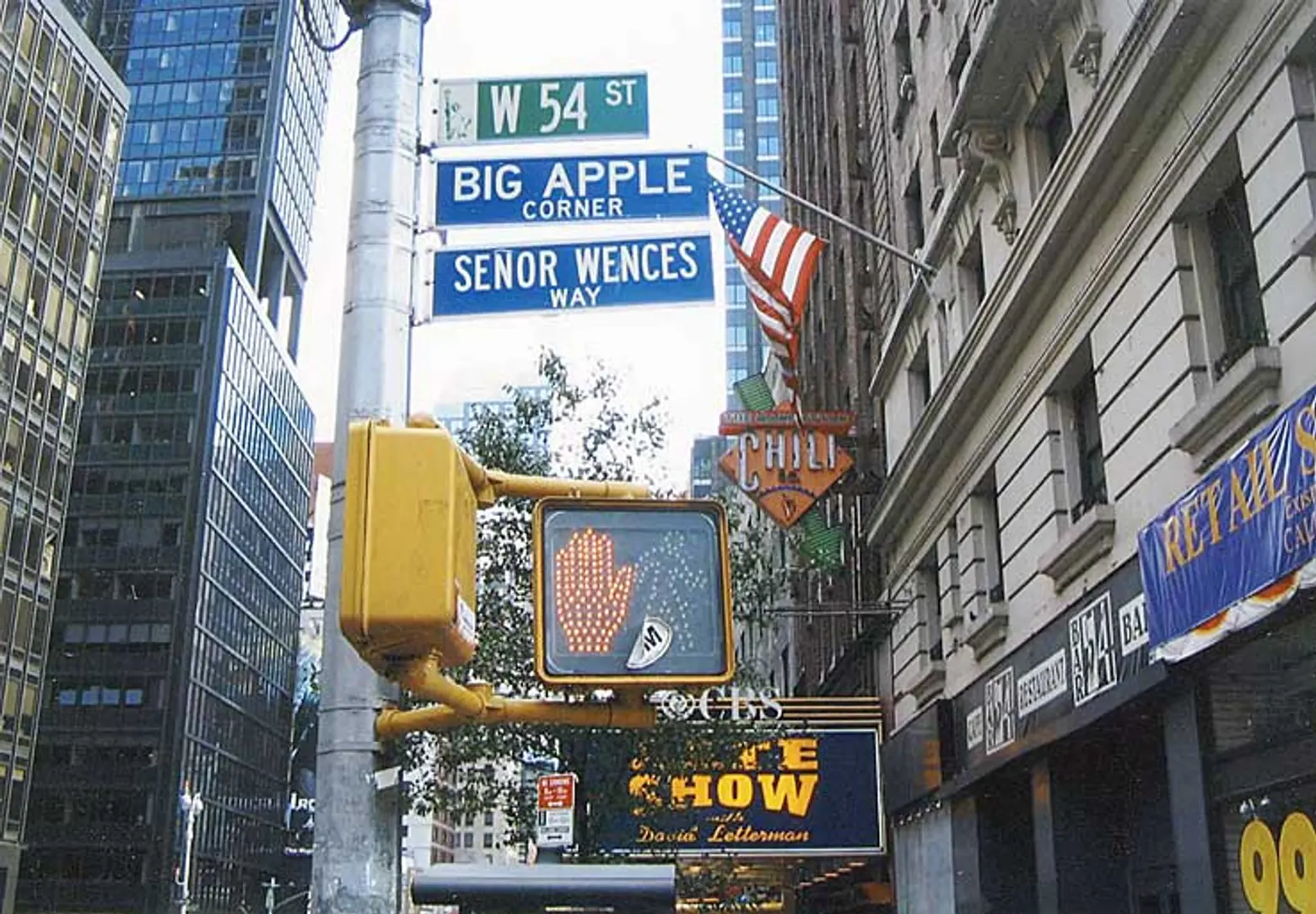 The “Big Apple Corner” dedicated in 1997. Image by Barry Popik
The “Big Apple Corner” dedicated in 1997. Image by Barry Popik
The “Big Apple” truly cemented itself in everyday language in the 1960s when Charles Gillett, the president of the NYC Convention and Visitors Bureau, returned to the phrase as a way to boost tourism. The campaign, which took place during the crime and bankruptcy-filled 1970s, enlisted local celebrities to promote the city by using Big Apple stickers and pins. Known as the “Big Apple Campaign,” it helped increase tourism as well as the term’s usage, which endures up until this day.
In 1997, a “Big Apple Corner” was dedicated at West 54th Street and Broadway by Mayor Rudy Giuliani to pay respect to Fitz Gerald who lived in a building at the corner with his family between 1934 and 1963.
Via the New York Public Library with additional information provided by Barry Popik
RELATED:
Interested in similar content?
Leave a reply
Your email address will not be published.
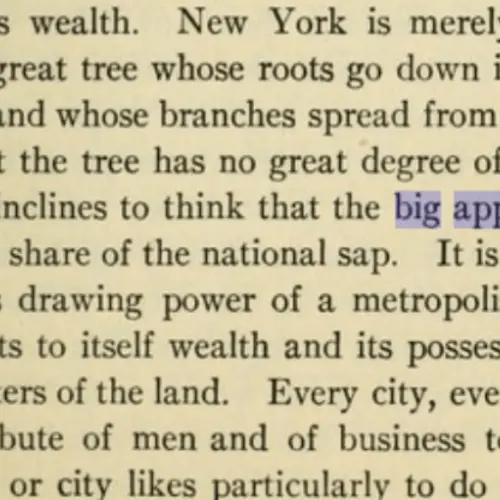
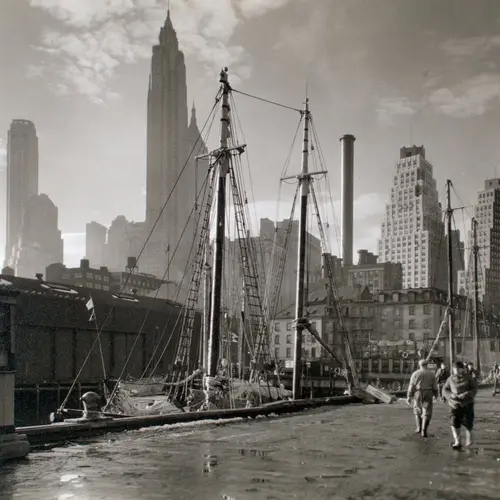
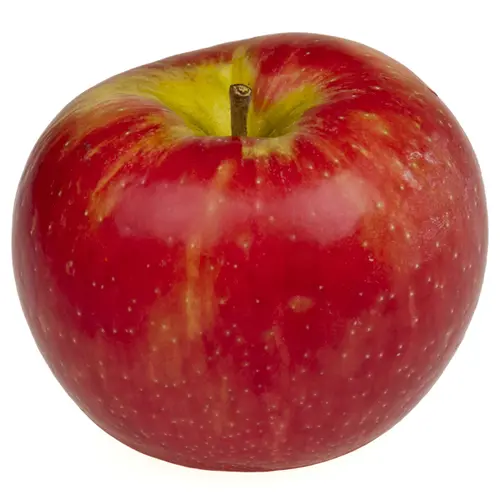
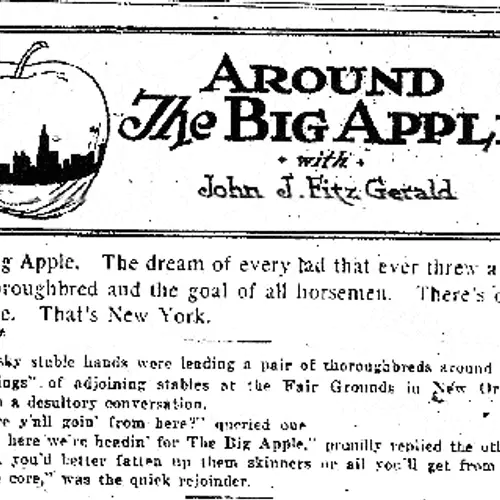
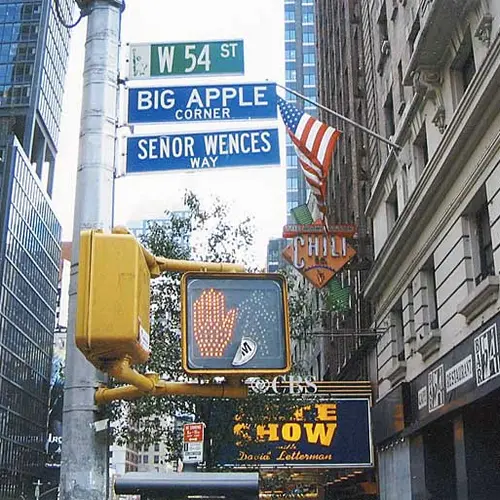






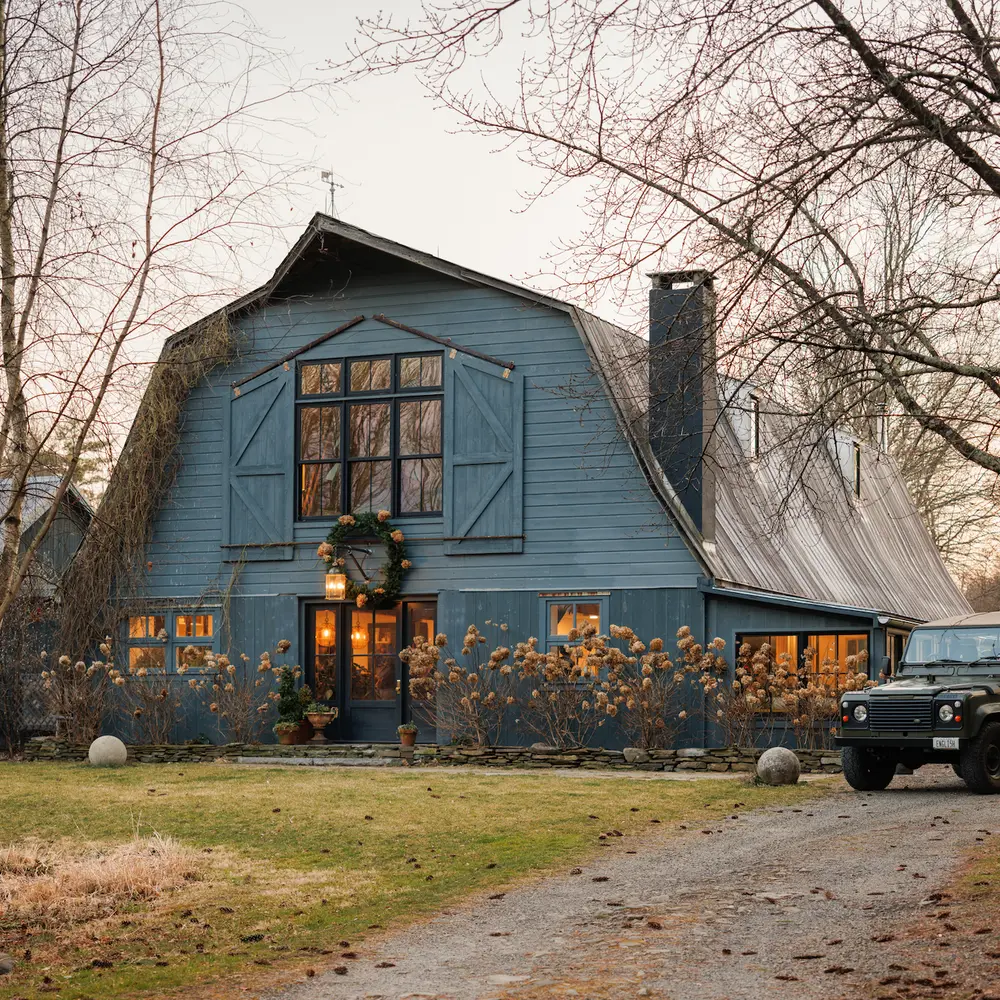



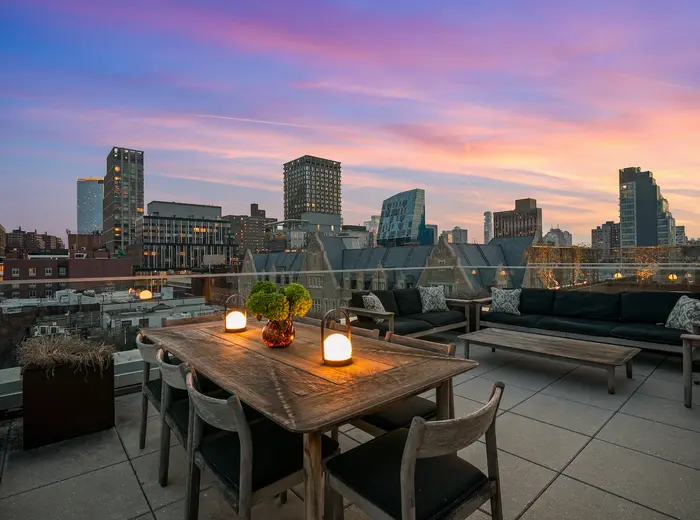

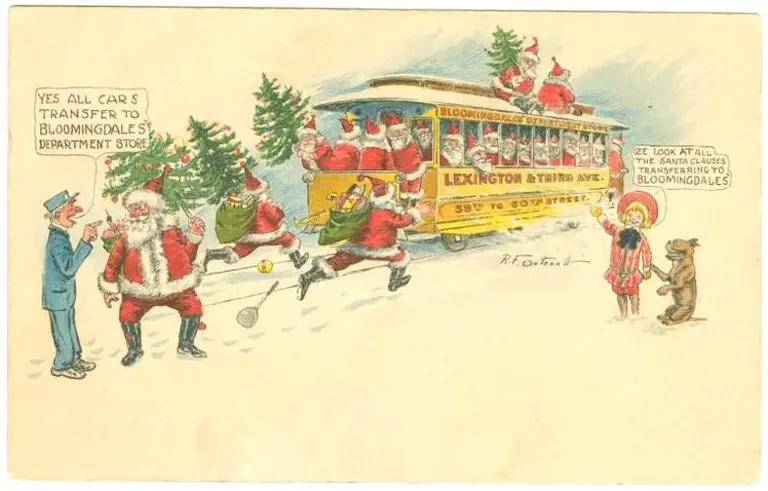

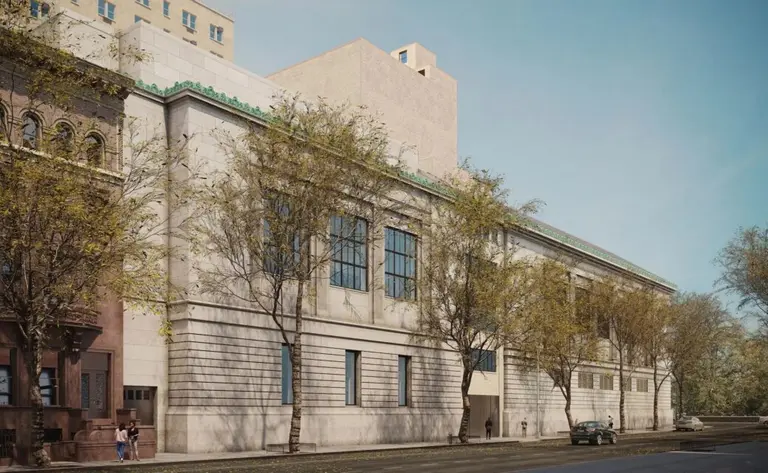













Close but no cigar. Here’s the real deal: http://www.history.com/news/ask-history/why-is-new-york-city-nicknamed-the-big-apple
Congratulations for not mentioning the work of Prof. Gerald Cohen and me! We wrote the book on the Big Apple nickname (1991; revised edition 2011), and I have a website with graphics (the 1924 “Around the Big Apple with John J. Fitz Gerald” column, for example) that you should have used! If you contacted me, I would have helped you! You prominently mention the 1909 cite–an extended metaphor that really has nothing to do with how the nickname started. And you don’t mention the black stablehands at the Fair Grounds racetrack in New Orleans who gave track writer John J. Fitz Gerald the name! You also don’t mention the “Big Apple Corner” street sign that I dedicated. Unforgivable!!!!!!!!!